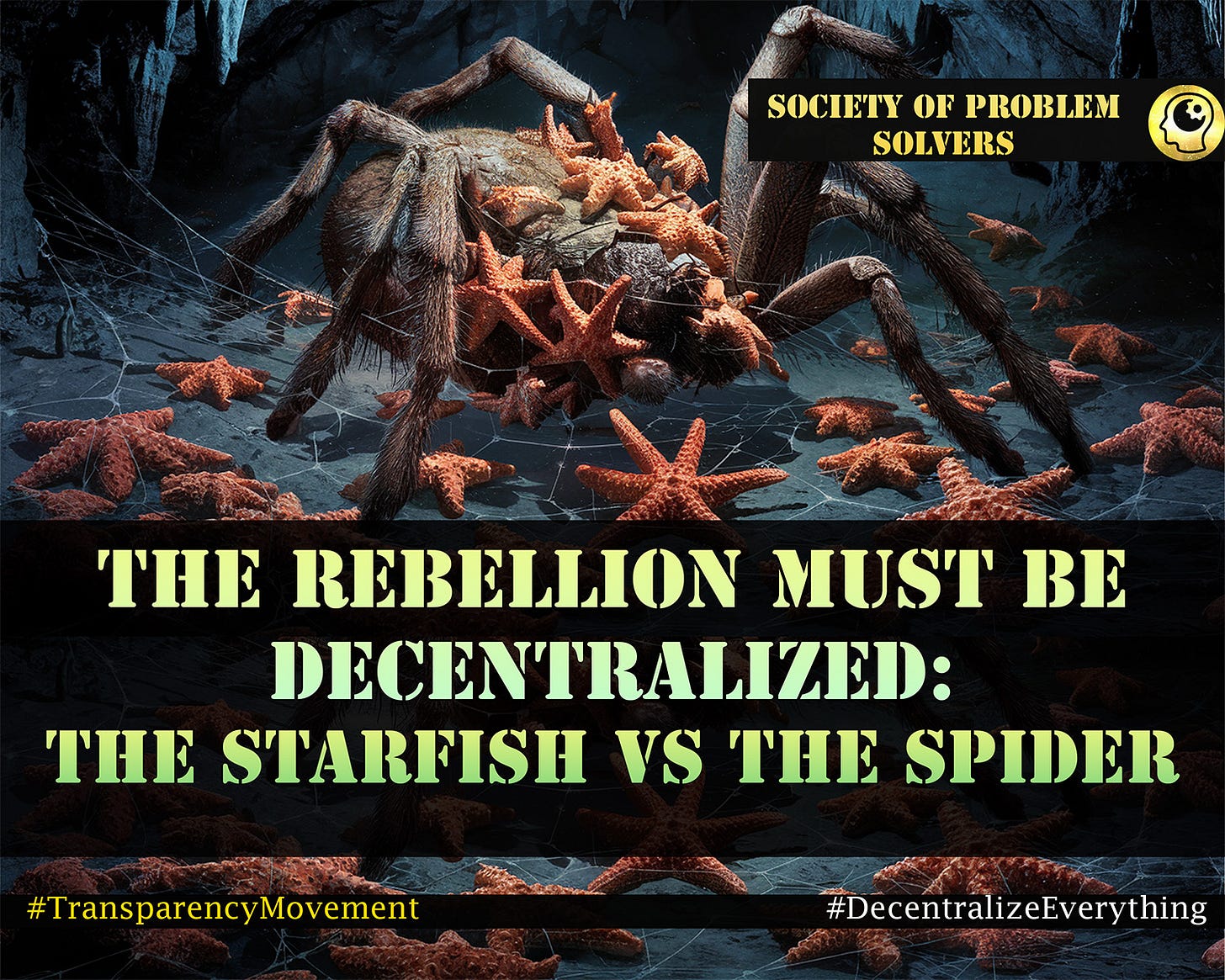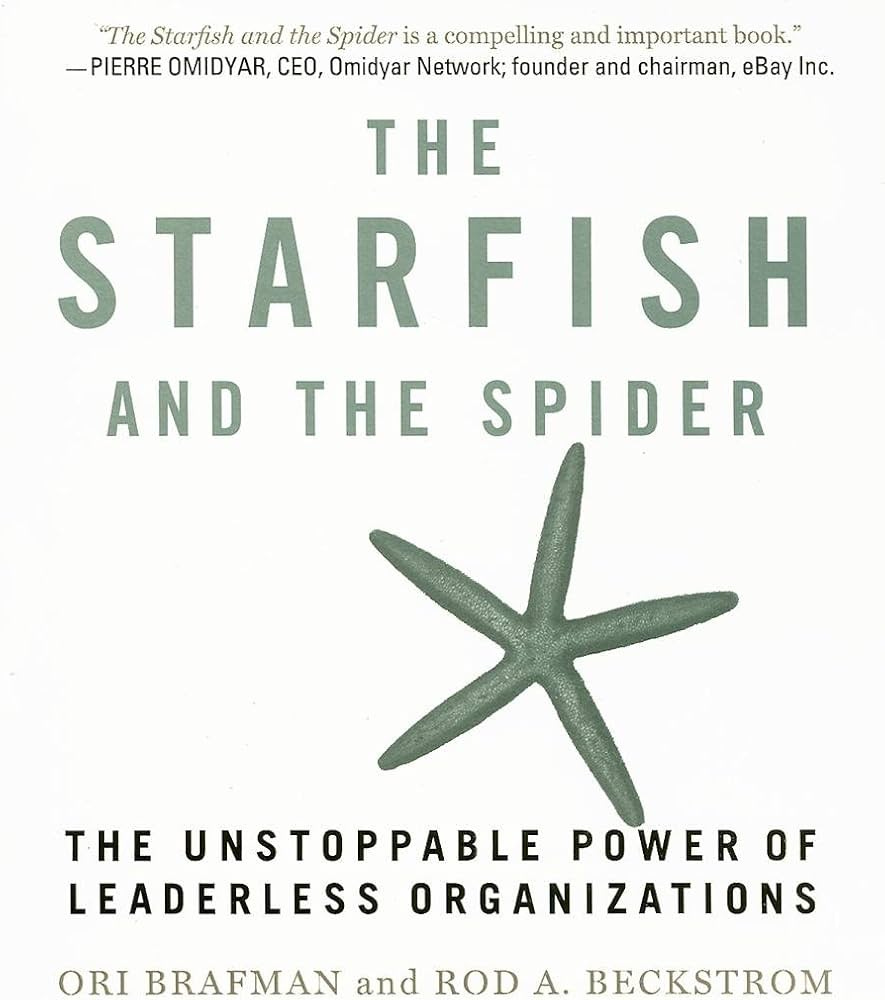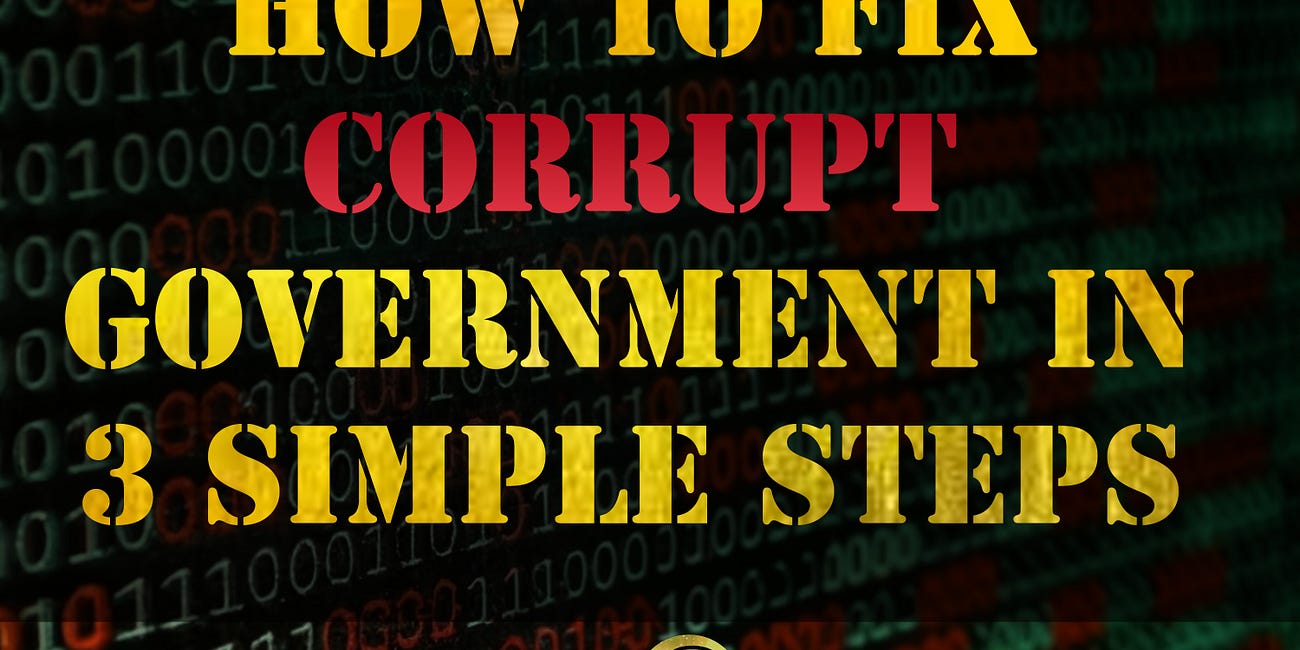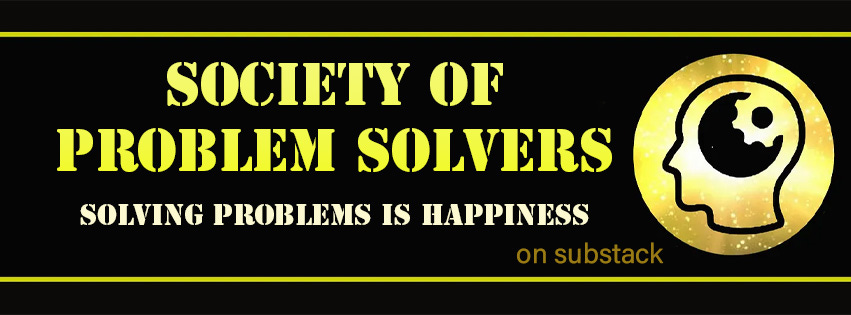The Rebellion Must Be Decentralized
'The Corruptors' Are Too Powerful and Too Good At Corrupting Centralized Systems. Anything Centralized Will Become Corrupted.
Most of the systems of our world are centralized (top-down) systems, which means they are fairly easy to corrupt. In a centralized system, if you corrupt the head - leader, boss, president, king, CEO, representative, board of directors, or top of the system -then you effectively corrupt the whole thing. The simple rule is this: the fewer people that have the power, the easier the system is to corrupt. If a system has one all-powerful ruler, all you need to do is corrupt that one person.
At the time it was invented, America was very decentralized compared to the other countries in existence and was thus fairly hard to corrupt. But today it has become “recentralized” through political parties and federal laws, and now the number of people needed to corrupt America doesn’t seem so high, especially since the population and economic influence has boomed since then.
It is 536 people - and not even all of them, just the right majority:
435 Representatives
100 Senators
1 President
When you consider things like the money in politics, blackmail traps (like the ones that we know about) such as Jeffrey Epstein, Ghislaine Maxwell (and her father), P. Diddy, Boystown, plus the revolving door of big business, paying out family members millions for homemade garbage quality art, giving cushy jobs to the right people for ridiculous pay, and controlling the centralized media conglomerates -corrupting the majority of 536 people does not seem like that difficult of a task anymore.
Especially with the top of intelligence and law enforcement agencies under that same corrupted control, while being neatly compartmentalized to keep the good people in those systems from knowing what is really going on at the top.
In the book The Starfish and the Spider, the dynamics and power of decentralized, leaderless organizations are compared to traditional centralized structures. The main premise of the book is that decentralized systems are like a starfish that can regenerate a whole new organism from a severed limb, especially when attacked. Decentralized systems are more adaptable, resilient, “antifragile,” and more effective than centralized systems, represented by the spider, which dies if its head is cut off. This metaphor underlines the book’s core idea: cutting the “head” off a centralized organization cripples it, but decentralized systems survive and evolve and even grow when they are under duress.
Centralized systems rely on hierarchy, clear lines of authority, and a central command (like a corporation or military unit), which offer efficiency and control. In contrast, decentralized systems distribute power broadly across participants, often lacking a formal leader. One great example from the book is the comparison between the monolithic music industry of the 1990s and Napster. While massive record companies were centralized entities that controlled distribution and acted as gatekeepers to the industry, Napster’s peer-to-peer file-sharing model was decentralized, enabling users to interact and share without central oversight—making it nearly impossible to shut down through conventional means.
The book illustrates that decentralization can empower grassroots movements, scale rapidly, and quickly outperform traditional models in most contexts. Examples of this today include the rapid collapse of the media conglomorates like CNN, MSNBC and the NY Times, in favor of “starfish” organizations such as podcasts, social media, and even us here at The Society of Problem Solvers on Substack. Other examples include Bitcoin and Decentralized Finance (DeFi) vs. Traditional Banking, WikiLeaks vs. Government Secrecy, Reddit & Retail Investors vs. Wall Street (GameStop Saga), and more.
Most people think that we can fix our biggest problem—the corruption in our systems—by finding better leaders. But that will never happen. Any “leader” who arises against The Corruptors will either be targeted, have their character assassinated, be blackmailed, bribed, or worse. The Corruptors have control of media, government, military, and black-budget systems. Any leader, no matter their side or stance, would just end up being part of a “spider” centralized system—and thus would be easy to corrupt.
So the way we can fix this is to build a new, upgraded system for humanity to operate on - one that is hard to corrupt, decentralized, transparent, and above all gets real results.
In nearly all of our governmental systems, our representatives are the point of corruption. They are the place where the corruption happens. To fix this problem, we can bypass the corrupted politicians with a new system that holds them accountable.
We must decentralize, but organize. If we figure that out, we can turn all of our systems including business, media, government, unions, and even charities into what Tim Urban calls “Genies” in his book, What’s Our Problem?
How?
By using a new branch of science called collective “swarm” intelligence as a way to organize decntralized nodes into highly aligned porblem solving units. This, coupled with a new culture of radical transparency, results based decision making, and a new code of ethics, is the right direction to get to the world we all want to see - a world that is hard to corrupt. And one that gets amazing results.
But you don’t have to take our word for it. If you are the leader of a system you can decentralize your own position, make your system transparent, and let the group help you solve problems. It works. You can dive deeper on that HERE if you want to test the theory yourself.
The article below was written a year and a half ago, and we are working on an updated one, but until then the ideas and principles found in this article stand taller than the day we wrote it: How To Uncorrupt Government in 3 Simple Steps.
Please take the time to understand it and help us build a Genie to fix these corrupt systems.
How To Uncorrupt Government In 3 Simple Steps
“You never change things by fighting the existing reality. To change something, build a new model that makes the existing model obsolete.” – Buckminster Fuller
Thanks for reading!
All problems that do not defy the laws of physics are solvable.
Humans solve problems better in high-trust groups.
And Solving problems is happiness!
#CollectiveIntelligence
Please join our think tank message board at SwarmAcademy.ai where we continue conversations like this one and where you will be able to participate in swarm intelligence problem solving with us on a SWARM FORCE platform once it is finished being built.
For over 3 billion years on this planet there were only single-celled organisms. Then one day they somehow learned to work together and make complex multi-celled creatures . Right now we are like those single-celled organisms. Our next evolution is finding how to work together, better… (like we wrote about here).
#SwarmAcademy #NetworkState #LEADERLESS #ResultsMatterMost #DecentralizeEverything #DemandTransparency
COMMENTS ARE FOR EVERYONE AS A PLACE TO THINK-TANK SOLUTIONS. They will never be for paid-only subscribers and we will never charge a subscription.






My assumptions
1. Communication is electronic.
2. Substack is the medium.
3. I'm aware of the concept of Network states, swarming and starfish protocol as a way of generating ideas. I'm not sure what parts of these 3 phases is acceptable to the Society for adoption.
Do we need a constitution, a set of rules, a code of conduct, a whiepaper?
What are the elements needed to decentralise?
1. Like minded people.
2. Ideas that can be transferred from thought to written format and shared.
3. Money. An agreed hot wallet, type of crypto, decentralized network, decentralized exchange, transparent blockchain.
4. A decentralized protocol, similar to the Bitcoin whitepaper.
5. A voting mechanism similar to when Bitcoin cash forked off Bitcoin.
What step by step breakdown has been drawn up, to consider, endorse and adopt by the Society?
What is the timeline to develop accepted protocols by the Society?
What electronic security arrangements are available to ensure data safety?
Is there a protocol for people who have genuine grievances, conflict of ideas - in other words a way to address what is called 'pushback' - to help give a better understanding .
I love the idea of creating a decentralized governance to problem solve, but I'm unsure if I'm on the right track here. I'm open to being corrected and would love to hear back from anyone.
This is very helpful content. Thank you for the content, and for mentioning Tim Urban's new book. I hope to find time to read it.